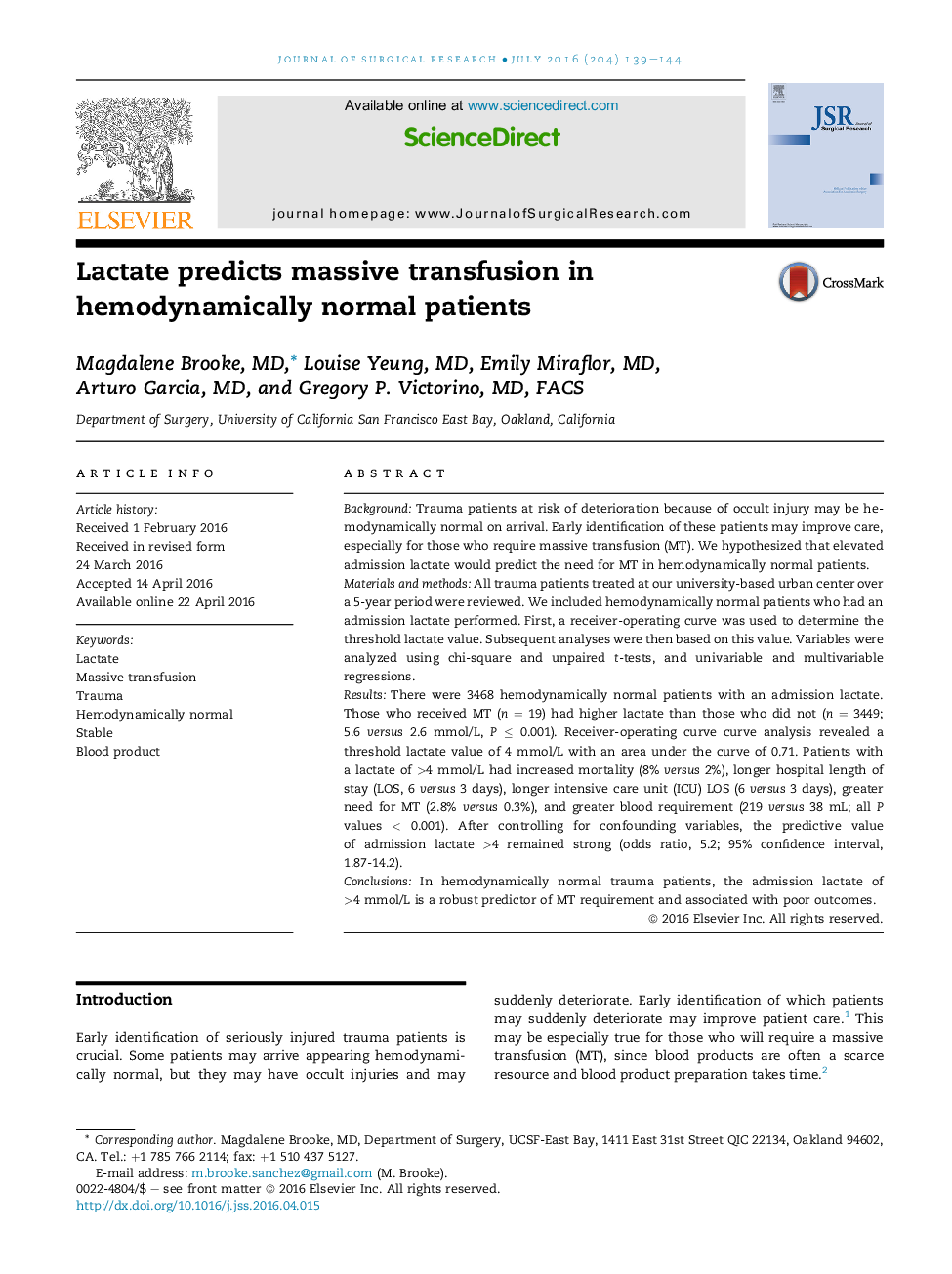| Article ID | Journal | Published Year | Pages | File Type |
|---|---|---|---|---|
| 4299168 | Journal of Surgical Research | 2016 | 6 Pages |
BackgroundTrauma patients at risk of deterioration because of occult injury may be hemodynamically normal on arrival. Early identification of these patients may improve care, especially for those who require massive transfusion (MT). We hypothesized that elevated admission lactate would predict the need for MT in hemodynamically normal patients.Materials and methodsAll trauma patients treated at our university-based urban center over a 5-year period were reviewed. We included hemodynamically normal patients who had an admission lactate performed. First, a receiver-operating curve was used to determine the threshold lactate value. Subsequent analyses were then based on this value. Variables were analyzed using chi-square and unpaired t-tests, and univariable and multivariable regressions.ResultsThere were 3468 hemodynamically normal patients with an admission lactate. Those who received MT (n = 19) had higher lactate than those who did not (n = 3449; 5.6 versus 2.6 mmol/L, P ≤ 0.001). Receiver-operating curve curve analysis revealed a threshold lactate value of 4 mmol/L with an area under the curve of 0.71. Patients with a lactate of >4 mmol/L had increased mortality (8% versus 2%), longer hospital length of stay (LOS, 6 versus 3 days), longer intensive care unit (ICU) LOS (6 versus 3 days), greater need for MT (2.8% versus 0.3%), and greater blood requirement (219 versus 38 mL; all P values < 0.001). After controlling for confounding variables, the predictive value of admission lactate >4 remained strong (odds ratio, 5.2; 95% confidence interval, 1.87-14.2).ConclusionsIn hemodynamically normal trauma patients, the admission lactate of >4 mmol/L is a robust predictor of MT requirement and associated with poor outcomes.
